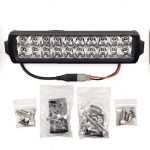If you’ve gotten used to growing vegetables for your table during the spring and summer months but believe there’s not much you can do to harvest vegetables during the frigid cold of winter, then think again.
Your winter garden can be a source of vegetables, too. It all depends on what veggies grow; how to protect them from the snow, winds or drenching rain; and when to plant.
Winter Veggies
You probably know that trying to grow vegetables like tomatoes, peppers, and melons in the frigid cold is a waste of time. However, there are veggies that thrive in the winter. They fall into three categories – slow-maturing, middle-maturing, and quick-maturing.
Slowly-maturing crops mature in about 100 days and include:
• Beets
• Brussels Sprouts
• Cabbage
• Carrots
• Onions
• Parsnip
Middle-maturing crops mature in about 55-days to 70-days. They include:
• Kale
• Radishes
• Turnips
• Collards
• Chard
• Leeks
• Kohlrabi
• Scallions
Quickly-maturing crops mature in about 40 days and include:
• Salad Greens
• Bok Choi
• Lettuce
• Spinach
• Chicory
• Arugula
• Endive
Protecting Winter Veggies
No doubt, you need to provide the winter veggies with some sort of protection from the wind, snow, and temperatures. However, you don’t need elaborate techie devices to do this. In fact, too much warmth can prove to be harmful. Simple materials that are not expensive can suffice. Moreover, these materials can be added to an existing vegetable garden. The key is to allow ventilation.
The materials, also referred to as season extenders include:
• Mulch. A 2-inch to 3-inch layer of straw, leaves or pine needles keep a plant’s base and roots warm as it prevents evaporation. No ventilation is needed.
• Cloche. This small transparent covering protects a plant from the winter cold, snow, and wind. The material can be a traditional bell-shaped glass cloche or a recycled plastic milk jug cut in half.
• Cold frame. This is simply a box with a clear top and no bottom that is commonly made from old windows on a wooden, metal, or straw-bale base. The frame needs ventilation, which can be achieved by propping the top open on sunny or warm days.
• Hoop tunnel. A heavy translucent plastic or greenhouse fabric suspended on metal conduit or PVC hoops. This too needs ventilation, which is achieved by opening the ends or removing the cover on sunny or warm days.
• Unheated greenhouse. This can be as simple as an unheated glass or translucent plastic building that absorbs heat from the sun. This needs ventilation, which is achieved by opening windows on sunny or warm days.
• Hot bed. This is a cold frame with an extra heating device. You can use manure, which emits heat, or electric lights including a string of Christmas lights. Ventilation is achieved by propping the frame top open on sunny or warm days.
• Row cover. Lightweight, semi-transparent fabric that permits light, water, and air through yet holds warmth and guards against wind floating on plants with rocks holding down the edges or suspended on a wire or PVC hoops. No ventilation is necessary because it is self-ventilating.
(Next Time: Growing Winter Veggies In Your USDA Plant Hardiness Zone)
(Source: fix.com)








